
This article originally appeared in the March/April 2019 issue of Museum magazine, a benefit of membership with the Alliance. Click here to learn more about membership!
Using narrative nonfiction writing as the springboard, five museums created public programs addressing the intersection of science and religion.
Charlie’s room has a lived-in feel. Plastic water bottles, to-go containers, and utensils sprinkle the surface of the bedside table. Mismatched socks are scattered around the floor. A pair of big shiny balloons in the corner near the ceiling cheer “Get Well Soon!!” Textbooks sit, forgotten, on the bench beneath them. He has been here at Children’s Hospital for months, waiting for his ANC to rise high enough to provide him with some defense against infection.
This was the beginning of the first draft of a piece of nonfiction writing by Sarah Christensen. She is a pediatric nurse who works with children with acute care needs and a Christian who is active in her church. Her piece came to the Museum of Life and Science in Durham, North Carolina, through Think Write Publish, a writing fellowship program at Arizona State University. From 2015 to 2018, the program’s Science & Religion project used creative nonfiction writing to explore how science and religion can reinforce each other to allow a more nuanced, profound, and rewarding experience of our world and our place in it.
Project fellows participated in three intensive workshops focused on developing, writing, marketing, and publishing their creative nonfiction stories about harmonies between science and religion. Also, five of the fellows worked with different museums to develop a public program, inspired by the fellow’s story, that would encourage audiences to engage in thoughtful reflection and productive conversation about the relationship between science and religion.
Storytelling in the City of Medicine
Christensen’s focus on medicine and religion, as well as the emotional tenor of her story, seemed tailor-made for a compelling adult program in Durham, the “City of Medicine.” Durham is one point of the Research Triangle, which has one of the largest life sciences clusters in the country, including three large research universities, numerous pharmaceutical and biotechnology firms, and multiple large health systems.
The Museum of Life and Science partnered with The Monti, a storytelling production company based in the Triangle, for the public event. We decided to follow The Monti’s classic format: five speakers, each telling a story on stage in less than 12 minutes. Speakers receive intensive coaching ahead of time but present with no notes. In addition to Christensen’s, four others told their stories: a first-year medical and divinity student wrestling with his faith in an anatomy laboratory; an OB/GYN struggling to reconcile her grief with her beliefs after a family tragedy; a woman and her decades-long search for the person who saved her from a childhood accident; and a local scholar-comedian who has found divine forces in the most unexpected places.
Our storytellers deserved a stage equal to their bravery. Enter the third program partner: the Carolina Theatre, a recently restored Beaux Arts cultural space in the center of town. With the theater on board, we could increase our audience size and reach people who might not visit the museum.
More than 500 people purchased tickets and filled the theater on November 3, 2017. When the house lights dimmed and the spotlight came on, the audience was treated to a riveting hour of stories, truly well told. The emotions ran the gamut, from humor to pain, grief to gratitude.
Standing alone in the spotlight, Christensen brought people to tears as she told how she carries on with her duties, even after the children she has been caring for pass away: My friends often ask me, “How can you believe in a God who lets children die?” Or another one is, “How can you believe in a God who would let these children suffer so much?” These are good questions, and I’ve thought a lot about them. And I think what I have done is reimagined God less as the cause of these tragedies and more as just as heartbroken as I am whenever this happens. And together we return to the bedside time after time. I think that’s what gives me the strength to do so.
Between stories, audience members were encouraged to talk with their neighbors and share their thoughts on social media. Following the program, each person was invited to fill out and self-address a “Postcard to My Future Self.” The postcard was designed to help participants reflect on the intersection of religion and science and to provide a reminder of their experience three months later when the postcard would be mailed back to them.
Science & Religion in Other Cities
In addition to the Museum of Life and Science, four other museums created public programs through the Science & Religion project. Each was inspired by the true story of a fellow, who then worked with an experienced educator to develop and implement the program. The first two programs listed are ongoing.
The Science Museum of Minnesota in Saint Paul created a theater performance dramatizing astronomer Johannes Kepler’s struggles to reconcile his scientific work and his religious beliefs and highlighting current space science that builds on his work. Following the performance, the actors offer questions for reflection and encourage discussion among audience members.
The Children’s Creativity Museum in San Francisco developed hands-on activities to teach families with young children about mindfulness and its connections to neuroscience and religious practices. For example, in one mindfulness activity, children can create and use a pinwheel to help them control their breathing. Meanwhile, caregivers can read about the scientific reasons that breathing helps reduce stress and the ways that different religions and cultures use slow breathing to focus.
Arizona State University invited the general public to share reflections about the relationship between science and spirituality at an outdoor arts festival in Phoenix. Participants wrote or drew their ideas on paper leaves and added them to a grove of artificial trees. People also participated in an impromptu filmed reflection, which was edited into a video in the style of the “Fifty People, One Question” project.
The Museum of Science in Boston organized a teacher professional development workshop designed for science educators in faith-based schools. The workshop included a variety of expert speakers who helped participants share and document best practices and useful tools. Eighteen educators attended the workshop and afterward created a social media group to continue the conversation.
The Programs’ Goals
The Science & Religion project was both exciting and a little scary for the educators who created the public programs. Science centers and children’s museums usually avoid addressing topics, like religion, that can be controversial. However, museum visitors’ values and beliefs influence how they experience museums—including the science presented in our exhibits and programs. This project was an opportunity to engage with those values and beliefs directly in a positive and nonconfrontational way.
The five programs were deliberately diverse in terms of target audience and format, but they shared several goals: to explore the relationship between science and religion in ways that were timely and important; create program content that participants would find interesting and personally relevant, and provide opportunities for learners to gain insights into the relationship between science and religion.
The educators who developed the programs used a number of common design principles to achieve these goals. First, all of the programs shared an inclusive approach that invited different ideas about the relationship between science and religion. They did not present any perspective as “right,” nor did they try to convince participants of anything. Instead, the programs asked participants to consider the possibility that science and religion can be in dialogue and that insights from one can inform the other.
Finally, the programs were designed to be participatory. They provided a variety of ways for people to engage with the topic and with each other.
Impact on the Public and Museums
The project’s evaluation methods included quantitative and qualitative data collected through brief surveys, written and drawn responses, and program team observations. The evaluation was designed as an embedded component in each program. For example, the Postcard to My Future Self that participants filled out at the Medicine & Religion event in Durham was an opportunity for them to reflect on and be reminded of their experience, and it served as our evaluation tool. Each postcard included one question for participants to answer on a scale of 1 to 5 and one open-ended prompt.
We collected quantitative data from 361 participants, and they gave the programs an average ranking for all measures at around 4 or above (on a 5-point scale). We also received qualitative feedback from 274 participants who responded to open-ended questions. Almost 83 percent of participants from all five programs said their experience was positive.
What’s next for Science & Religion? Some of the programs are still being presented as they are described here, while others have inspired new and different efforts. The project team is also planning a new project focused on dialogue about big questions related to science and religion.
While Science & Religion was a relatively small and exploratory project, it has had a big impact on the participating educators and organizations. We have gained confidence and developed concrete strategies for addressing controversial topics and challenging questions. We have learned that engaging our audiences’ emotions, values, and beliefs is as important as engaging their intellect. And perhaps most importantly, we learned the power of letting participants define the meaning of their experience.
How to Tackle Touchy Subjects
Museums looking to explore controversial topics can employ some of the successful strategies used in the Science & Religion project.
- Share program goals with participants. Explaining the goals of the project helped participants feel comfortable sharing their thoughts and respecting other points of view.
- Use personal stories to create connections. The perspectives and experiences of real people created an accessible and non-threatening entry point into the topic. Participants also reported strong empathetic and emotional responses to the personal stories shared in the programs.
- Provide opportunities for reflection and conversation. Participants enjoyed formulating their own ideas and hearing from others. They reported that both the reflection and interaction that the programs encouraged helped them gain insights into the relationship between science and religion.
- Document participant ideas. The opportunity to record their ideas by writing, drawing pictures, or being filmed motivated some people to participate in the programs and confirmed that their thoughts were important.
- Create opportunities for extended engagement. Some participants were interested in continuing the conversation with their group or sharing what they had heard, thought about, and discussed with other people later on.
Rae Ostman is associate research professor and co-director of the Center for Innovation in Informal STEM Learning at Arizona State University in Tempe.
Mitchell Sava is vice president of innovation and engagement at the Museum of Life and Science in Durham, North Carolina.
Acknowledgments
Science & Religion project support was provided by the John Templeton Foundation. We extend our thanks to Lee Gutkind, Dan Sarewitz, and Michael Zirulnik for their leadership of the project; to Jenny McCullough Cosgrove of ASU’s University Office of Educational Effectiveness and Evaluation for the program evaluation; and to Jeannie Colton, Emily Hostetler, Stephanie Long, and Darrell Porcello for participating in the program team along with the authors. Finally, we deeply appreciate the opportunity to partner with the project’s fellows and our collaborating partner organizations.
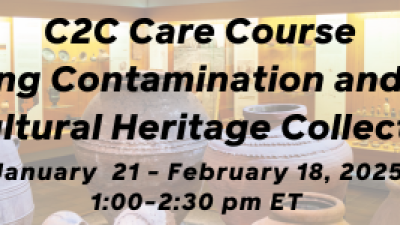



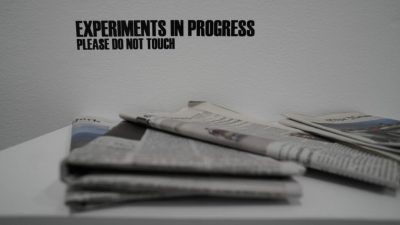
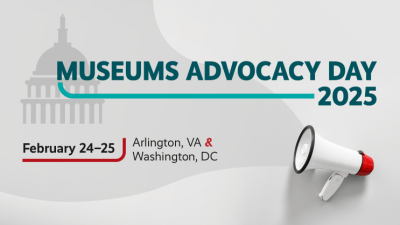
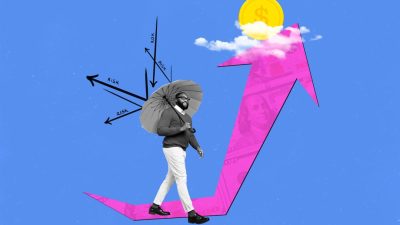
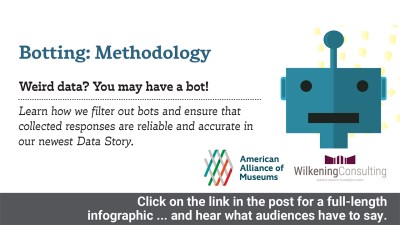
Comments